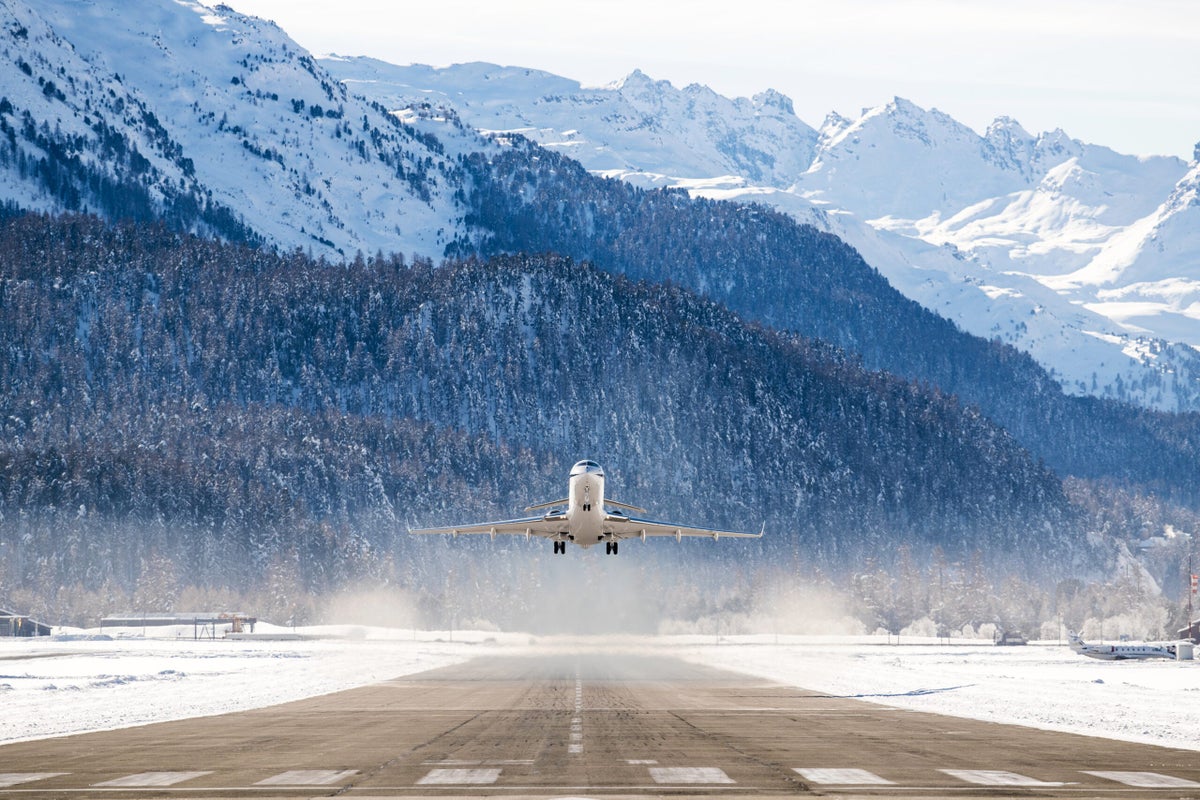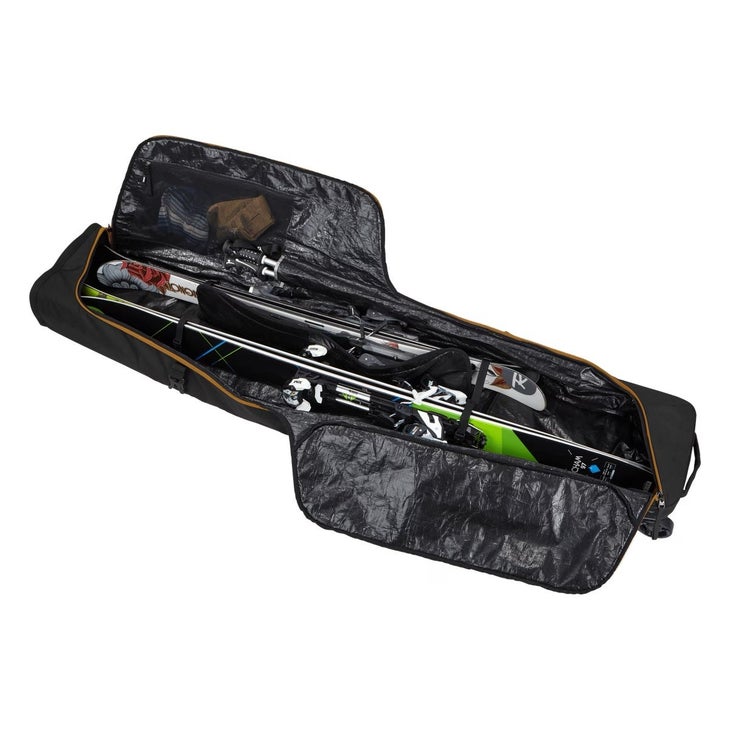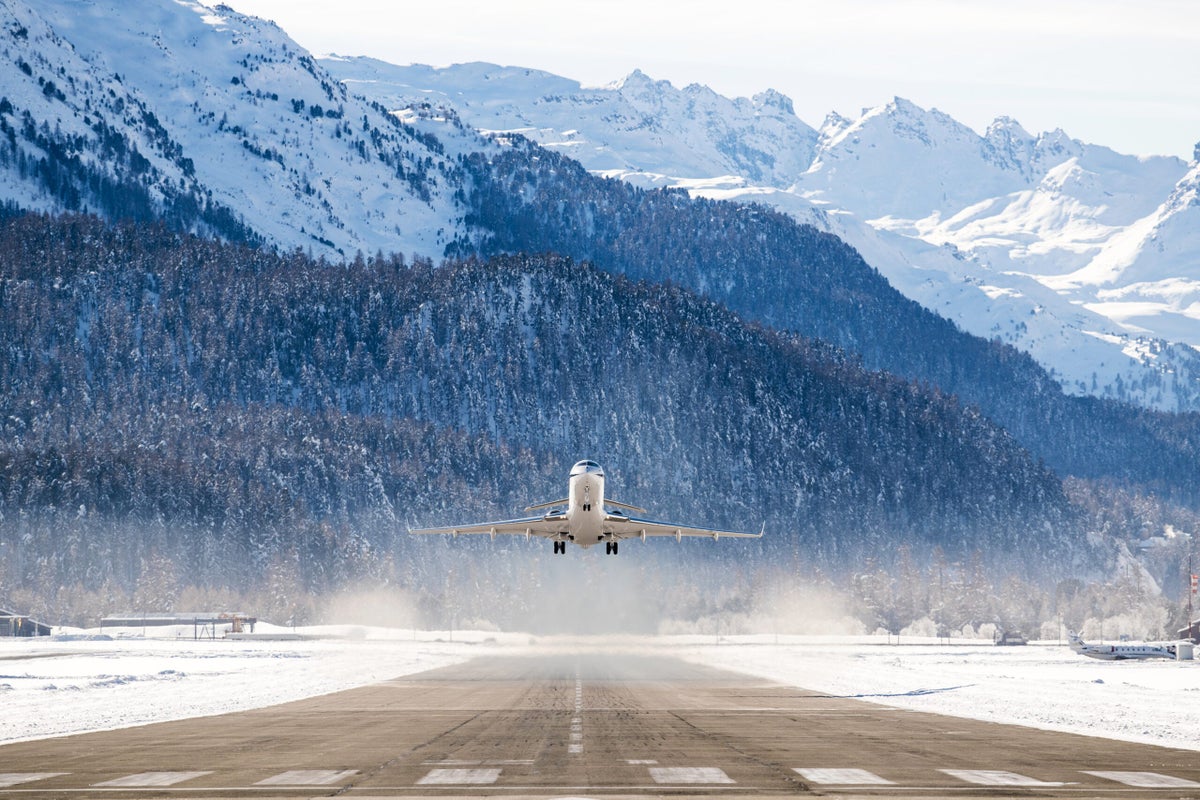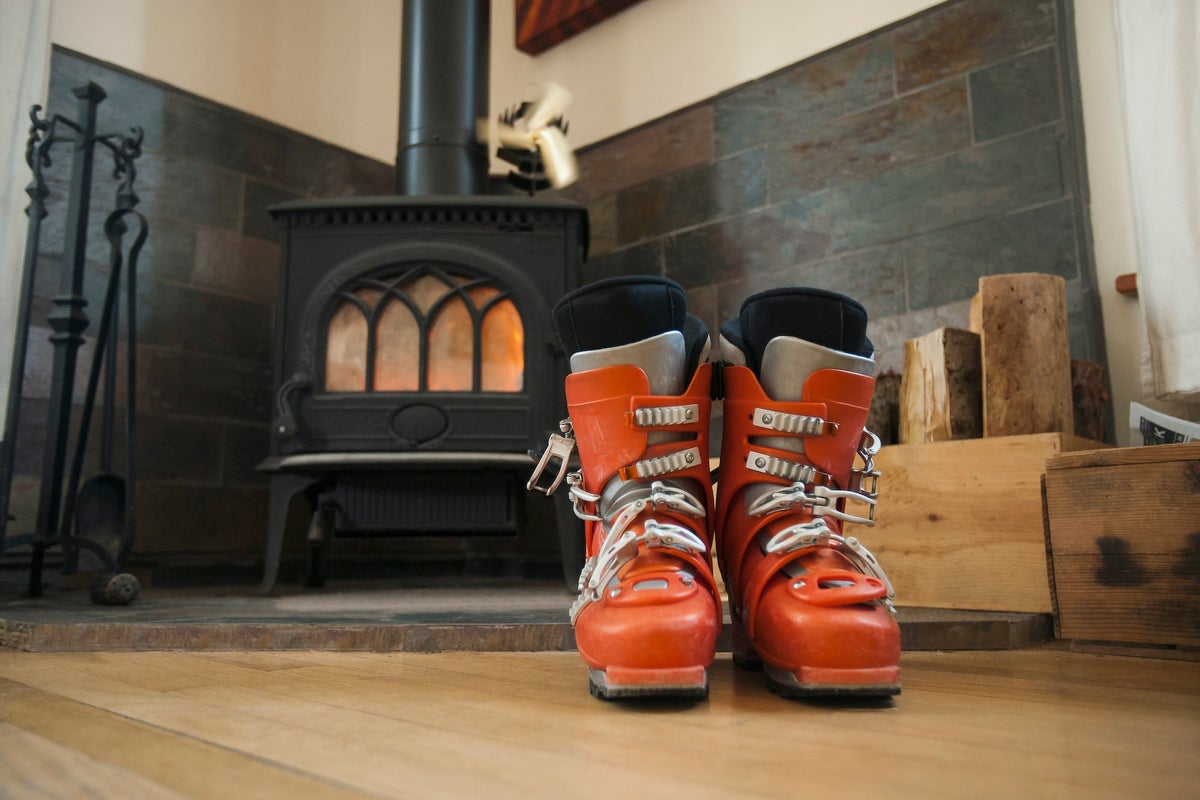
Flying is stressful enough when all you have is a carry on. Add a couple pairs of skis and boots to the mix (and the pressure of making sure they actually arrive at your destination), and flying can feel downright anxiety-inducing.
Sure, you can demo high-performance sticks at your destination, but sometimes you just want to ski on your own gear. (That’s why you bought it, right?). To ensure you don’t get nickel-and-dimed your whole trip or unpack your bag to reveal a broken binding or a cracked helmet, we’ve outlined some tried-and-true tactics for flying with your gear.
How to Fly with Your Skis
Here’s everything you need to know before you roll up to the airport.
FYI: Your Ski Bag and Boot Bag Are Considered One Piece of Luggage

The three major U.S. airlines—United, American, and Delta—all allow you to check your ski bag and a separate boot bag together as a set. The bag set is part of your checked bag allowance, so if you get one checked bag as part of your reservation, you’re good to go. If not, you’ll have to pay for one checked bag (aka your ski bag and boot set), which costs between $35 and $40 depending on the airline.
But Together, the Two Bags Have to Be Under 50 Pounds
Airlines are sticklers on this one. If the combined weight of your ski bag and boot bag is over 50 pounds you’ll have to either pay overweight bag fees or the “set” will be charged as two separate items, depending on the airline.
Check with your carrier for ski bag dimensions. For example, both United and Delta note that the outside linear dimensions (length + width + height) of the ski bag must be 115 linear inches (292 cm) or less.
If You Fly Southwest, Your Skis and Boots Might Travel for Free
Southwest considers your ski bag and boot bag to be one “set,” and it counts as one checked bag, but since the recent policy change, only certain fares and loyalty status flyers can check their bags for free. If you book the Choice Extra fare, you get two free checked bags, but any of the other new fare levels—Basic, Choice, and Choice Preferred—no longer include any free bags; first bag is #35, and the second bag is $45.
That said, Rapid Rewards A-List Preferred members get two free checked bags, while regular A-List members and Rapid Rewards credit card holders get one, which would include a ski-and-boot-bag set as the one checked piece of luggage.
Some Carriers Make Their Own Rules, so Check Before You Check
If you’re flying Frontier or Spirit, don’t expect the ski bag policies to be the same. On Frontier, known for its stringent baggage rules, a pair of skis and boots in a separate bag still count as one piece of checked luggage, but if your ski bag alone weighs more than 25 pounds, it will no longer be included in the set, and you’ll have to pay an additional bag fee. On Spirit, all bags, even ones made for skis, will be charged as oversized if they exceed 62 inches.
Even Though Checking Ski Boots Won’t Cost You Extra, Think Twice Before Doing It
If your skis get lost in transit, you can rent or demo, often the exact same model. If your boots get lost, your entire ski trip will be affected. If you have a tight connection or multiple stops, it is probably smart to carry your ski boots on the plane with you.
The Best Ski Bags for Travel
Since you’re probably wondering, here are a couple great ski bags for carrying on.

A great boot bag that meets all the carry-on requirements is Kulkea’s Kartta Travel Boot Bag ($180). It has a laptop sleeve, a helmet sling, and space for any clothing essentials. We also like the Db Hugger Backpack ($229), which also has a laptop sleeve and space for boots. Its “ribcage” technology keeps its contents safe, and the main compartment opens fully, like a duffel bag, for easy access.
Lugging around skis and boots is cumbersome. So instead of adding a second or third bag, opt for a larger double ski bag that can double as a suitcase. In addition to your skis, poles, and potentially your ski boots, most double ski bags can accommodate your helmet, goggles, and outerwear.
One of the best options is the Snow Roller Pro from Db. It has space for two pairs of skis and enough extra room for your helmet, goggles, poles, and a bunch of outerwear, mid-, and base layers. The larger Snow Roller Pro also has space for ski boots. They retail for $269 and $339, respectively. Another similar option is the Thule RoundTrip ($300).

If you don’t have a few hundred bucks to spend, give the Dakine Fall Line Roller (currently 30 percent off at REI) a peek. The bag has room for two pairs of skis and a set of poles, and has a removable boot bag. Another similar option is the Evo Deluxe Snow Roller ($270).
All of these bags are under the airline-required 115 linear inches (292 cm).
P.S.: If you’re making multiple stops or traveling internationally, it may be worth it to buy an AirTag ($29) and drop it in your checked bag(s). With an AirTag, you can use the Find My app to track down the item or to reassure yourself that everything is on board and en route.
How to Pack to Avoid Gear Damage
Most ski bags have internal straps that keep your skis and poles from sliding around, but you can also utilize some of your ski wear to to pad the skis to keep them secure and to protect them from aggressive luggage handlers. This clothing-as-protection method also works well if you’re bringing two pairs of skis.
We do want to note that this can be tricky. The airlines have been known to be particular about exactly what—aside from skis and boots—go into your ski and boot bags. Read your carrier’s policy closely and use common sense. Most will let you get away with using your burly outerwear as padding, then also stashing gloves, helmet, goggles, and other ski-specific gear in your ski and boot bags. But if you’re trying to fit a week’s worth of apparel in with your skis and pushing up to that 50-pound limit, you might get yourself in hot water.
Finally, if you’re worried about dulling your perfectly sharpened edges, put a long sock over the ski tips. And for space, put a thick rubber band around the binding breaks so they aren’t sticking out.
Consider Room for Your Ski Bag During Auto Transit
It sounds obvious, but don’t forget to plan for ground transport with an oversized bag. Ski bags won’t fit in a standard cab or compact rental car. You’ll need to call an UberXL (or equivalent) to get a van or SUV that can accommodate your gear, and you will need to be ready to ask the driver to put down a seat. If you’re renting a car, you’ll likely need to pay extra for a full-sized SUV. For reference, the Db Snow Roller, the longest bag we recommended above, maxes out at 210 centimeters (82.6 inches) long.
The post 9 Travel Hacks for Flying with Your Skis This Winter appeared first on Outside Online.














